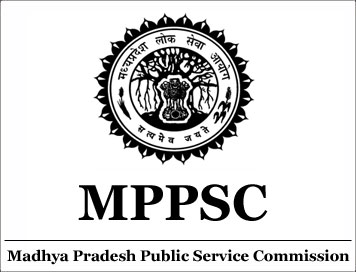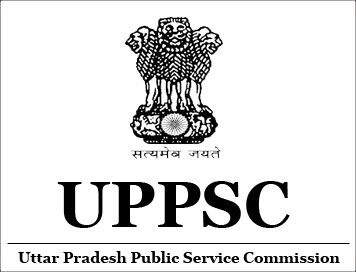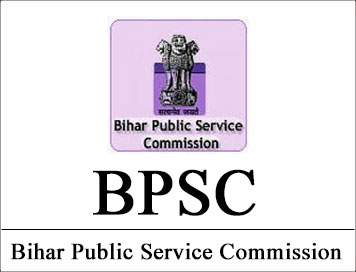
(पाठ्यक्रम) MPPSC परीक्षा मुख्य सिलेबस
(Syllabus) MPPSC Examination Mains Syllabus
प्रश्न पत्र-। सामान्य अध्ययन पेपर-(1)
1.इतिहास एवं संस्कृति
- विश्व इतिहास -
- पुनर्जागरण
- इंग्लैंड की क्रांति
- फांस की क्रांति
- औद्योगिक क्रांति
- रूसी कांति
- प्रथम एवं द्वितीय विश्व युद्ध
- भारतीय इतिहास-भारत का राजनीतिक, आर्थिक एवं सामाजिक इतिहास, हडप्पा सभ्यता से 10 वीं शताब्दी तक।
- मुगल और उनका प्रशासन, मिश्रित संस्कृति का उद्भव ।
- 11 वीं से 18 वीं शताब्दी तक मध्यभारत का राजनीतिक, आर्थिक, सामाजिक इतिहास ।
- ब्रिटिश शासन का भारतीय अर्थव्यवस्था एवं समाज पर प्रभाव । ब्रिटिश शासन के प्रति भारतीयों की प्रतिकिया : कषक एवं आदिवासियों का विद्रोह, प्रथम स्वतंत्रता आंदोलन/संग्राम ।
- भारतीय पुनर्जागरण : राष्ट्रीय, स्वतंत्रता आंदोलन एवं इसके नेतृत्वकर्ता (मध्यप्रदेश के विशेष संदर्भ में) ।
- गणतंत्र के रूप में भारत का उदय, राज्यों का पुनर्गठन, मध्यप्रदेश का गठन, स्वतंत्रता प्राप्ति के पश्चात् के प्रमुख घटनाकम ।
- मध्यप्रदेश के विशेष संदर्भ में भारतीय सांस्कृतिक विरासत : प्राचीन काल से आधुनिक काल तक विभिन्न कला प्रारूपों, साहित्य, पर्व (उत्सवों), वास्तुकला के प्रमुख पक्ष । भारत में विश्व धरोहर स्थल, मध्यप्रदेश में पर्यटन ।
2.भूगोल -
- भारत एवं विश्व भौतिक भूगोल की प्रमुख विशेषताए/ लक्षण ।
- प्रमुख प्राकृतिक संसाधनों का वितरण,
- मध्यप्रदेश के कृषि-जलवायु क्षेत्र एवं उद्योग ।
- भारत एवं मध्यप्रदेश की जनांकिकी, मध्यप्रदेश की जनजातियां, आपदाग्रस्त जनजातियों के विशिष्ट संदर्भ में ।
- कृषि पारिस्थितिकी एवं मनुष्य के लिये इसकी प्रासंगिकता, धारणीय प्रबंधन एवं संरक्षण । राज्य की प्रमुख फसलें, कृषि जोत क्षेत्र एवं फसल चक्र, फसलों के उत्पादन और वितरण का भौतिक और सामाजिक पर्यावरण । राज्य में बीज एवं खाद की गुणवत्ता एवं आपूर्ति, कृषि के तरीके, बागवानी, मुर्गी पालन, डेयरी, मछली एवं पशु पालन आदि के मुद्दे एवं समस्याएँ, कृषि उत्पादन, परिवहन, भण्डारण एवं विपणन आदि से संबंधित समस्याएँ एवं चुनौतियाँ।
- मृदा : मृदा के भौतिक, रासायनिक एवं जैविक गुण, मृदा निर्माण की प्रक्रिया एवं मृदा के खनिज एवं कार्बनिक तत्व तथा भूमि की उत्पादकता बनाये रखने में इनका योगदान। मृदा एवं वनस्पति में आवश्यक वनस्पति पौषक और विभिन्न लाभदायक तत्व । समस्याग्रस्त मृदा और उसके परिष्कार के तरीके, मध्यप्रदेश में मृदा क्षरण और हास की समस्यायें। जलग्रहण आधार पर मृदा संरक्षण नियोजन।
- भारत में खाद्य प्रसंस्करण एवं संबंधित उद्योग - संभावनाएं एवं महत्व, स्थान निर्धारण, उद्योग की पूर्ववर्ती एवं अग्रवर्ती आवश्यकताएँ, मांग पूर्ति श्रृंखला प्रबंधन। भारत में भूमि सुधार।
3.जल प्रबंधन -
- भू-जल एवं जल संग्रहण प्रबंधन ।
- जल का उपयोग एवं कुशल सिंचाई प्रणाली।
- पेयजल - आपूर्ति, जल की अशुद्धता के कारक एवं गुणवत्ता का प्रबंधन ।
4.आपदा एवं आपदा प्रबंधन -
- मानव निर्मित एवं प्राकृतिक आपदाएँ : आपदा प्रबंधन की अवधारणाएं एवं विस्तार की संभावनाऐं, विशिष्ट खतरे एवं उनका शमन।
- सामुदायिक योजना : संसाधन मानचित्रण, राहत एवं पुनर्वास, निरोधक एवं प्रशासनिक उपाय, सुरक्षित निर्माण, वैकल्पिक संचार एवं जीवन रक्षा हेतु दक्षता ।
- केस स्टडी (प्रकरण अध्ययन) - चेरनोबिल परमाणु संयंत्र त्रासदी 1986, भोपाल गैस त्रासदी 1984, कच्छ भूकंप 2001, भारतीय सूनामी 2004, फुकुसिमा डायची जापान परमाणु आपदा 2011, उत्तराखंड बाढ़ 2013, उज्जैन त्रासदी 1994, इलाहाबाद कुंभ की भगदड़ 2013, जम्मू एवं कश्मीर की बाढ़ 2014 आदि का अध्ययन ।
प्रश्न पत्र – || सामान्य अध्ययन पेपर (II)
1. संविधान, शासन की राजनैतिक एवं प्रशासनिक संरचना -
- संविधान निर्माण समिति, भारत का संविधान, प्रस्तावना, बुनियादी संरचना, मौलिक अधिकार एवं कर्तव्य एवं राज्य के नीति निदेशक सिद्धात, संविधान की अनुसूचियां, संवैधानिक संशोधन, भारत के संविधान की अन्य देशो के संविधानों के साथ तुलना ।
- केन्द्र एवं राज्य विधायिका ।
- केन्द्र एवं राज्य कार्यपालिका।
- न्यायपालिका – सर्वोच्च न्यायालय, उच्च न्यायालय, जिला एवं अधीनस्थ न्यायालय, न्यायपालिका की अवमानना ।
- भारतीय संघ की प्रकृति, केन्द्र एवं राज्यों के संबंध, शक्तियों का विभाजन (केन्द्र सूची, राज्य सूची एवं समवर्ती सूची) संसाधनों का वितरण ।
- विकेन्द्रीकरण एवं लोकतांत्रिक शासन में जनभागीदारी, स्थानीय शासन, संविधान के 73वें एवं 74वें संशोधन, पंचायतें, नगर पालिकाएँ (ग्रामीण एवं नगरीय, स्थानीय शासन)
- लोकपाल, लोकायुक्त एवं लोक न्यायालय- न्यायपालिका- संवैधानिक व्यवस्था के संरक्षण एवं प्रहरी के रूप में - न्यायिक सक्रियता, जनहित याचिका ।
- जवाबदेही एवं अधिकार-प्रतिस्पर्धा आयोग, उपभोक्ता न्यायालय, सूचना आयोग, महिला आयोग, मानव अधिकार
- आयोग, अजा/अजजा/अपिव आयोग एवं अन्य निवारण संस्थाएं/ प्राधिकरण । पारदर्शिता एवं जवाबदेही, सूचना का अधिकार, सेवा प्राप्ति का अधिकार, सार्वजनिक निधि का उपयोग ।
- लोकतंत्र की कार्य प्रणाली: राजनीतिक दल, राजनीतिक प्रतिनिधित्व, निर्णय प्रक्रिया में नागरिकों की भागीदारी ।
- निर्वाचन : निर्वाचन आयोग, निर्वाचन संबंधी सुधार ।
- समुदाय आधारित संगठन (CBOS) एवं गैर सरकारी संगठनों (NGOS) का उद्भव - स्व-सहायता समूह ।
- मीडिया की भूमिका एवं समस्याएं (इलेक्ट्रानिक, प्रिन्ट एवं सामाजिक)
2. बाह्य एवं आन्तरिक सुरक्षा के मुद्दे ।
3. सामाजिक एवं महत्वपूर्ण विधान :
- भारतीय समाज, सामाजिक बदलाव के एक साधन के रूप में सामाजिक विधान ।
- मानव अधिकार संरक्षण अधिनियम, 1993
- भारतीय संविधान एवं आपराधिक विधि (दण्ड प्रकिया संहिता) के अंतर्गत महिलाओं को प्राप्त सुरक्षा (सीआरपीसी)
- घरेलू हिंसा से स्त्री का संरक्षण अधिनियम-2005
- सिविल अधिकार संरक्षण अधिनियम 1955
- अनुसूचित जाति और अनुसूचित जनजाति (अत्याचार निवारण) अधिनियम 1989
- सूचना का अधिकार अधिनियम 2005
- पर्यावरण (संरक्षण) अधिनियम 1986
- उपभोक्ता संरक्षण अधिनियम 1986
- सूचना प्राद्यौगिकी अधिनियम-2000
- भ्रष्टाचार निवारण अधिनियम 1988
- मध्यप्रदेश लोक सेवाओं के प्रदान की गारंटी अधिनियम-2010
4. सामाजिक क्षेत्र - स्वास्थ्य, शिक्षा एवं सशक्तिकरण -
- स्वास्थ्य सेवायें - भारत/मध्यप्रदेश में महिलाओं एवं बच्चों के संदर्भ में निरोधात्मक एवं उपचारात्मक स्वास्थ्य कार्यक्रम । सभी के लिए उपचारात्मक स्वास्थ्य की उपलब्धता से संबंधित समस्याएँ । चिकित्सकों एवं चिकित्सा सहायकों (पैरामेडिकल स्टाक) की उपलब्धता, ग्रामीण क्षेत्र में चिकित्सा सेवायें ।
- कुपोषण - कारण और प्रभाव एवं पूरक पोषण हेतु शासकीय कार्यक्रम ।
- प्रतिरक्षा शास्त्र के क्षेत्र में तकनीकी दखल- प्रतिरक्षण, पारिवारिक स्वास्थ्य, बायोटेक्नोलोजी, संक्रामक एवं असंक्रामक बीमारियां एवं उनके उपचार ।
- जन्म-मृत्यु समंक (वायटल स्टेटिस्टिक्स) ।
- विश्व स्वास्थ्य संगठन- उद्देश्य, संरचना, कार्य एवं कार्यक्रम ।
5. शिक्षण प्रणाली -
- मानव संसाधन विकास में शिक्षा -एक साधन, सार्वभौमिक/ समान प्रारम्भिक शिक्षा, उच्चशिक्षा एवं तकनीकि शिक्षा, व्यवसायिक शिक्षा की गुणवत्ता, बालिकाओं की शिक्षा से संबंधित मुददे, वंचित वर्ग, निःशक्त जन से संबंधित मुद्दे ।
6.मानव संसाधन विकास :
- कुशल मानव संसाधन की उपलब्धता, भारत में मानव संसाधन की नियोजिता एवं उत्पादकता, रोजगार के विभिन्न चलन (ट्रेड्स), विभिन्न संस्थाओं जैसे -एन.सी.एच.ई.आर., एन.सी.ई.आर.टी, एन.आई.ई.पी.ए., यू.जी.सी., ओपन विश्व विद्यालय, ए.आई.सी.टी.ई, एन.सी.टी.ई., एन.सी.व्ही.टी., आई.सी.ए.आर., आई.आई.टी., आई.आई.एम., एन.आई. टी एन.एल.यू. एस. पोलीटेक्नीक एवं आई.टी.आई, आदि की भूमिका एवं मानव संसाधन विकास ।
7.कल्याणकारी कार्यक्रम
- वृद्धजन, निःशक्त जन, बच्चों, महिलाओं, श्रम, सामाजिक रूप से वंचित वर्ग एवं विकास परियोजनाओं के फलस्वरूप विस्थापित वर्गों से संबंधित मुददे एवं कल्याणकारी कार्यक्रम ।
8. लोक सेवाएं -
- लोकसेवाएं, अखिल भारतीय सेवाएं, केन्द्रीय सेवायें, राज्य सेवाएं, संवैधानिक पद- भूमिका, कार्य और कार्य की प्रवृत्ति, संघ लोक सेवा आयोग, मध्यप्रदेश लोक सेवा आयोग। शासन के बदलते प्रारूप के संदर्भ में केन्द्र एवं राज्य के प्रशिक्षण एवं प्रशिक्षण संस्थायें ।
9. लोक व्यय एवं लेखा
- लोकव्यय पर नियंत्रण, संसदीय नियंत्रण, प्राक्कलन समिति, लोकलेखा समिति आदि । भारत के नियंत्रक एवं महालेखा परीक्षक का कार्यालय, मौद्रिक एवं वित्तीय नीति में वित्त मंत्रालय की भूमिका, मध्यप्रदेश के महालेखाकार का गठन एवं कार्य ।
10. अंतर्राष्ट्रीय संगठन
- संयुक्त राष्ट्र एवं उसके सहयोगी संगठन ।
- अंतर्राष्ट्रीय मुद्रा कोष, विश्व बैंक एवं एशियाई विकास बैंक ।
- सार्क, ब्रिक्स, अन्य द्विपक्षीय एवं क्षेत्रीय समूह ।
- विश्व व्यापार संगठन एवं भारत पर इसके प्रभाव ।
प्रश्न पत्र – ||| सामान्य अध्ययन पेपर (III)
1.विज्ञान एवं तकनीकी :
- विज्ञान
- हमारे आस-पास व्याप्त पदार्थ, तत्व, यौगिक, मिश्रण, धातुएँ और अधातुएँ, कार्बन और इसके यौगिक, अणु, परमाण, परमाणु की संरचना, रासायनिक अभिकियाएँ, अम्ल, क्षार एवं लवण ।
- जीव, जीवों के प्रकार, ऊतक, जीवन की इकाई, कोशिका, जैविक क्रियाएँ, चयापचय, नियंत्रण और सामंजस्य, प्रजनन, आनुवांशिकी एवं जैव विकास ।
- गुरुत्वाकर्षण, गति, बल, गति के नियम, कार्य और ऊर्जा, प्रकाश, ध्वनि, विद्युत एवं चुम्बकत्व ।
2. तर्क एवं आंकड़ों की व्याख्या -
- आधार संख्याएँ और सांख्यिकी (अंक और उनके संबंध) संभाविता
- आकड़ों का प्रबंधन एवं व्याख्या (चार्ट, ग्राफ, तालिका, तथ्यांकी, पर्याप्ता आदि)
- अनुपात और समानुपात, इकाई विधि, लाभ एवं हानि, प्रतिशत, छूट, साधारण और चक्रवर्ती ब्याज ।
- क्षेत्रविधि, क्षेत्रफल, परिमाप, आयतन ।
- तार्किक शक्ति, विश्लेषणात्मक क्षमता और समस्या समाधान ।
3. तकनीकी -
- विज्ञान एवं तकनीकी का सामाजिक और आर्थिक विकास में अनप्रयोग, देशज तकनीकी, तकनीकी हस्तान्तरण और नवीन तकनीकी का विकास ।
- पेटेन्ट और बौद्धिक सम्पदा के अधिकार (ट्रिप्स, ट्रिम्स)
- विज्ञान एवं तकनीकी के क्षेत्र में भारतीयों का योगदान ।
4. विकासशील तकनीकी :
- नवीन तकनीकी जैसे सूचना और संचार तकनीकी, सुदूर संवेदन, अंतरिक्ष जी आय एस, जी पी एस, जैव प्रौद्योगिकी, नेनो तकनीकी, कृषि और अन्य संबंधित क्षेत्र, स्वास्थ्य, ई-गर्वनेन्स, यातायात, स्थानिक नियोजन, गृह एवं क्रीडा आदि में इनके अनुप्रयोग ।
5. ऊर्जा :
- परंपरागत और गैर परंपरागत ऊर्जा संसाधन ।
- ऊर्जा प्रबंधान : मुद्दे और चुनौतियाँ ।
- वैकल्पिक ऊर्जा संसाधनों की वर्तमान स्थिति और भविष्य की संभावनाएँ ।
6.पर्यावरण एवं धारणीय विकास
- पर्यावरणीय क्षरण : कारण, प्रभाव एवं निदान ।
- पर्यावरण संरक्षण विधियाँ, नीतियाँ और नियामक ढाँचा ।।
- पर्यावरण एवं विकास पर चर्चा ।
- ठोस, तरल, अपशिष्ट, जल-मल, हानिकारक चिकित्सा अवशिष्ट एवं ई-वेस्ट का प्रबंधन ।
- जलवायु परिवर्तन : कारण और निदानात्मक उपाय ।
- पर्यावरणीय छाप और इससे निपटने की रणनीतियाँ ।
7.भारतीय अर्थव्यवस्था -
- भारत में विकास का अनुभव ।
- मध्यप्रदेश में मन्द औद्योगिक विकास के कारण ।
- 1991 के बाद से हुए आर्थिक सुधार : औद्योगिक एवं वित्तीय क्षेत्र में सुधार, स्टॉक बाजार एवं बैंकिंग प्रणाली ।
- उदारीकरण, निजीकरण एवं वैश्वीकरण ।
- भारतीय अर्थव्यवस्था की वर्तमान प्रवृतियाँ एवं चुनौतियाँ ।
- भारत में विकास का नियोजन ।
- राष्ट्रीय आय एवं लेखांकन की प्रणाली ।।
- आधारभूत अधोसंरचना विकास एवं मुद्दे ।
- गरीबी, बेरोजगारी, क्षेत्रिय असंतुलन एवं प्रवजन ।
- नगरीय क्षेत्र के मुद्दे- नगरीय विकास के मुद्दे (सामाजिक एवं आर्थिक संरचना) एवं निम्न आय वर्गीय समूह के लिये आवास ।
- ग्रामीण क्षेत्र के मुद्दे, ग्रामीण विकास (सामाजिक एवं आर्थिक संरचना) एवं ग्रामीण साख ।
- विकास का सूचकांक, मानव विकास एवं आर्थिक विकास ।
- भारत और मध्यप्रदेश में सहकारिता आन्दोलन ।
- मध्यप्रदेश और भारतीय अर्थव्यवस्था में कृषि की महत्ता ।
- आर्थिक विकास के तत्व ।।
- कृषि क्षेत्र एवं अन्य सामाजिक क्षेत्रों के लिये प्रत्यक्ष एवं अप्रत्यक्ष सब्सीडी के मुददे ।
- लोक वितरण प्रणाली: उद्देश्य, कार्यप्रणाली, सीमायें, खाद्य सुरक्षा एवं बफर स्टॉक से संबंधित मुददे ।
प्रश्न पत्र – IV सामान्य अध्ययन पेपर (IV)
1. मानवीय आवश्कताएँ एवं अभिप्रेरणा : लोक प्रशासन में नैतिक सद्गुण एवं मूल्य प्रशासन में नैतिक तत्व-सत्यनिष्ठा, उत्तरदायित्व एवं पारदर्शिता, नैतिक तक एवं नैतिक दुविधा तथा नैतिक मार्गदर्शन के रूप में अन्तरात्मा, लोक सेवकों हेतु आचरण सहि शासन में उच्च मूल्यों का पालन । दार्शनिक/विचारक, सामाजिक कार्यकर्ता/ सुधारक - महावीर, बुद्ध, कौटिल्य, प्लेटो, अरस्तू, गुरूनानक, कबीर, तुलसीदास, रवीन्द्रनाथ टैगोर, राजा राम मोहन रॉय, स्वामी दयानंद सरस्वती स्वामी विवेकानंद, श्री अरविन्दो, मोहनदास करमचंद गाँधी, सर्वपल्ली राधाकृष्णन, भीमराव रामजी अम्बेड़कर, मौलाना अबुल कलाम आजाद, दीनदयाल उपाध्याय, राम मनोहर लोहिया आदि ।
2. मनोवृत्ति : विषयवस्तु, तत्व, प्रकार्य : मनोवृत्ति का निर्माण, मनोवृत्ति परिवर्तन, प्रबोधक संप्रेषण, पूर्वाग्रह तथा विभेद, भारतीय संदर्भ में रूढ़िवादिता ।
3. अभिक्षमता एवं लोक सेवा हेतु आधारभूत योग्यताएं, सत्यनिष्ठा, निष्पक्षता एवं असमर्थकवादी, वस्तुनिष्ठता, लोक सेवा के प्रति समर्पण, समानुभूति, सहिष्णुता एवं अशक्त वर्गों के प्रति संवेदना/ करूणा ।
4. संवेगिक बुद्धि अवधारणा, प्रशासन/शासन में इसकी उपयोगिता एवं अनुप्रयोग ।
5. भ्रष्टाचार : भ्रष्टाचार के प्रकार एवं कारण, भ्रष्टाचार का प्रभाव, भ्रष्टाचार को अल्पतम करने के उपाय, समाज, सूचनातंत्र, परिवार एवं विसलब्लोअर (Whistleblower) की भूमिका, भ्रष्टाचार पर राष्ट्रसंघ की घोषणा (रवैया), भ्रष्टाचार का मापन, अंतर्राष्ट्रीय पारदर्शिता आदि ।
6. पाठ्यकम में सम्मिलित विषयवस्तु पर आधारित प्रकरणों का अध्ययन ।
पंचम प्रश्नपत्र
सामान्य हिन्दी
इस प्रश्नपत्र का स्तर स्नातक परीक्षा उत्तीर्ण छात्रों के समकक्ष होगा । इसका उददेश्य उम्मीदवार की पढ़ने, समझने और लेखन की योग्यता एवं हिन्दी में स्पष्ट तथा सही विचार व्यक्त करने की जाँच करना है।
सामान्यतः निम्नलिखित विषयों पर प्रश्न पूछे जायेंगे
(क) पल्लवन, सन्धि व समास
- (1) दिये गए वाक्यों का व्यापक अर्थ (शब्द-सीमा 50 शब्द)
- (2) सन्धि, समास व विराम चिन्ह
(ख) संक्षेपण
(ग) प्रारूप लेखन - शासकीय व अर्धशासकीय पत्र, परिपत्र, प्रपत्र, विज्ञापन, आदेश, पृष्ठांकन, अनुस्मारक (स्मरण पत्र), अधिसूचना, टिप्पण लेखन - (कोई दो)
(घ)प्रयोग, शब्दावली तथा प्रारंभिक व्याकरण
- (1) प्रशासनिक पारिभाषिक शब्दावली (हिन्दी व अंग्रेजी)
- (2) मुहावरे अथवा कहावतें
- (3) विलोम शब्द एवं समानार्थी शब्द
- (4) तत्सम तद्भव शब्द
- (5) पर्यायवाची शब्द
- (6) शब्द युग्म
(ड०)(1) अपठित गद्यांश
(2) प्रतिवेदन - (प्रशासनिक, विधि, पत्रकारिता, साहित्य व सामाजिक)
(च) अनुवाद (वाक्यों का)
हिन्दी से अंग्रेजी एवं अंग्रेजी से हिन्दी
षष्ठम प्रश्नपत्र
- 1.हिन्दी निबंध लेखन प्रथम निबंध (लगभग 1000 शब्दों में) अंक - 50
- 2. द्वितीय निबंध (लगभग 250 शब्दों में) अंक - 25
- 3.तृतीय निबंध (लगभग 250 शब्दों में) अंक - 25

Courtesy: MPPSC






